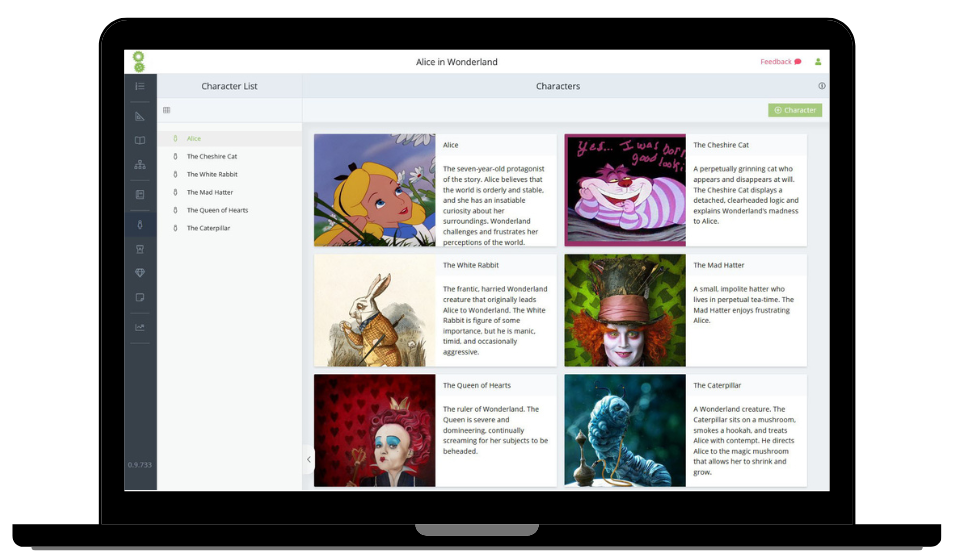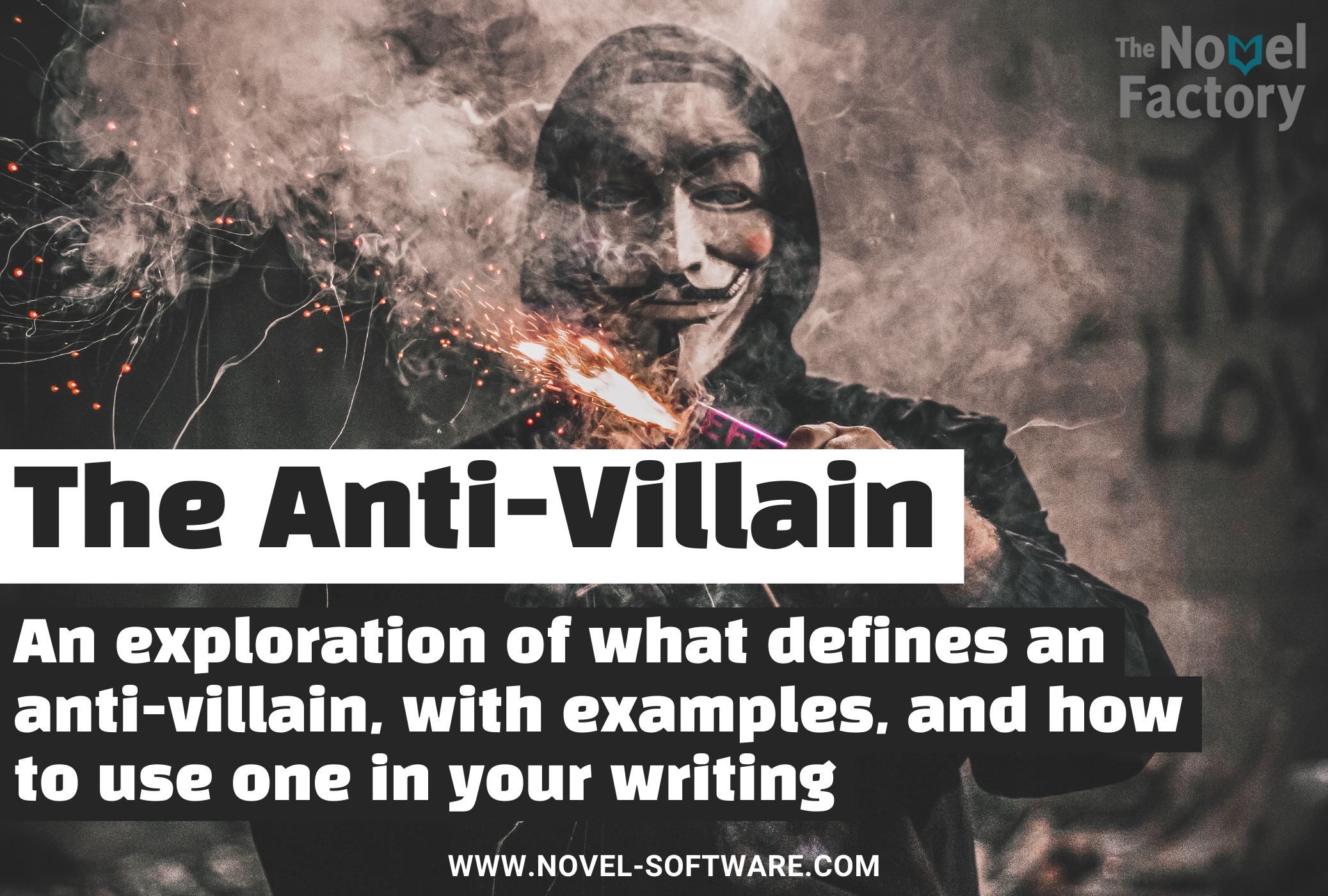
What Is an Anti-Villain?
In a nutshell, an anti-villain is a character who plays the role of the antagonist in the story, but who does not have the typical traits associated with a villain.
In this article, we’ll explore the concept of an anti-villian in literature in a lot more detail, including what defines one, and how to create a great one for your novel.
An anti-villain compared to a classical villain archetype
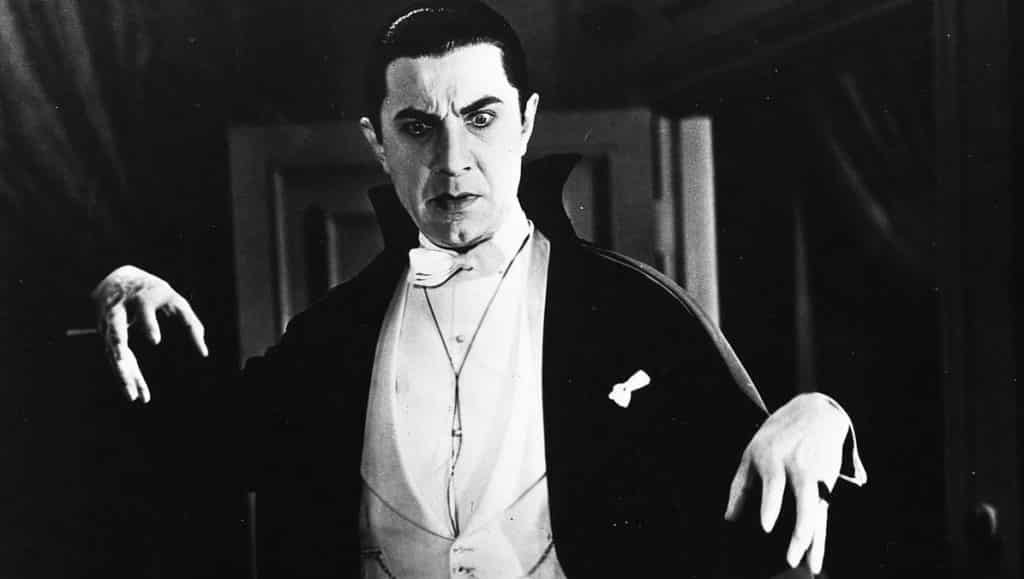
In order to better understand what an anti-villain is, let’s take a few steps back and make sure we’re clear on what a ‘traditional’ villain is.
A classic villain archetype is bad, through and through. They will have an evil goal, such as taking over the world, or making a coat out of puppies, and they will go about achieving their objective by causing pain and suffering with zero regard for anyone else’s feelings or safety.
They simply don’t care – or they actively take pleasure in other people’s suffering. They will also usually appear to be evil for evil’s sake, with no redeeming features, positive sides, or backstory to help us understand their motivations.
A classic example of an archetypal villain is Dracula. An actual monster of a man, in the original Dracula books he is pure evil personified. He spreads fear and causes death and harm, apparently because it’s simply his nature.
Villains as simplistic as this are rare in today’s world of literature and film, likely because as a society we’ve come to believe that things are rarely so black and white, and our fiction reflects those evolving beliefs.
The Sliding Scale of Evil
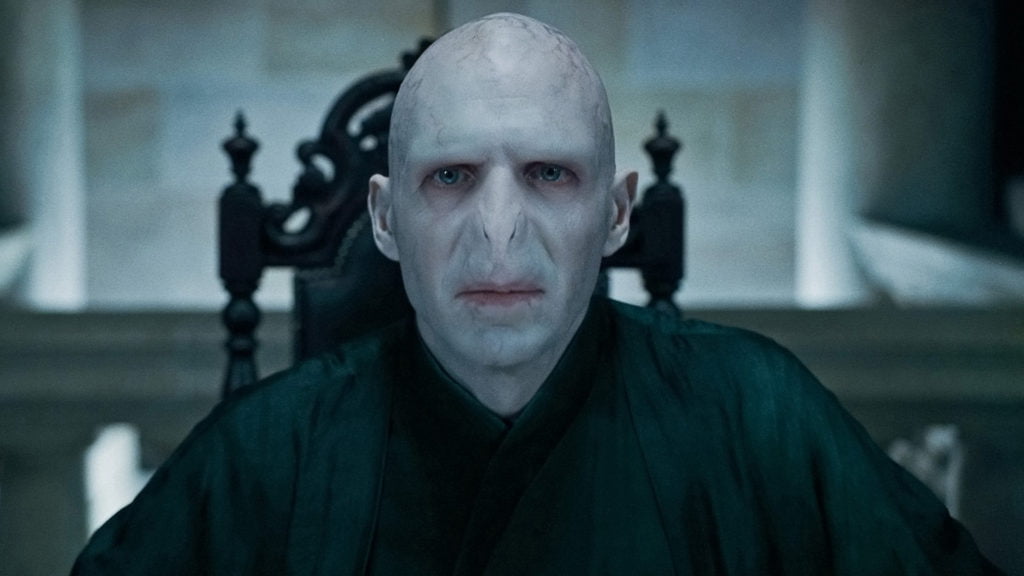
Not all anti-villains are equal.
Some anti-villains are 99% evil but with a tiny sliver of something which makes them not quite pure darkness. A good example of this is Voldemort, who is pretty bad, all told. He wants power and destruction, for selfish reasons, and he seems to positively relish people’s suffering.
However… as the story progresses through the books, we do learn that he was abandoned by his non-magic father and his mother died after childbirth. Being abandoned by his muggle father may not justify his hatred of all muggles, but it certainly helps us understand it, which is the first step for a villain to slide into being an anti-villain. And losing his mother as a baby sparks empathy in most people.
On the other hand, Magento from X-men is a very sympathetic villain, much further towards the lighter end of the villainy scale.
Magneto is classified as a villain as he is the antagonist in the stories, but the fact that he is an extreme ‘anti’ villain is evidenced by the fact that many people ask if he even is a villain.
So why is that?
He is a holocaust survivor, so immediately draws a great deal of sympathy, and makes us understand why he has such strong feelings about humans treating badly those they consider different – which means we empathise with his goals and motivations. Furthermore, in his youth he was actually friends with one of the main heroes, Professor Xavier, which indicates he is only one small step away from the side of ‘good’.
Let’s take a closer look at the traits which shift a villain further from darkness and more into grey.
Aspects of an Anti-Villain
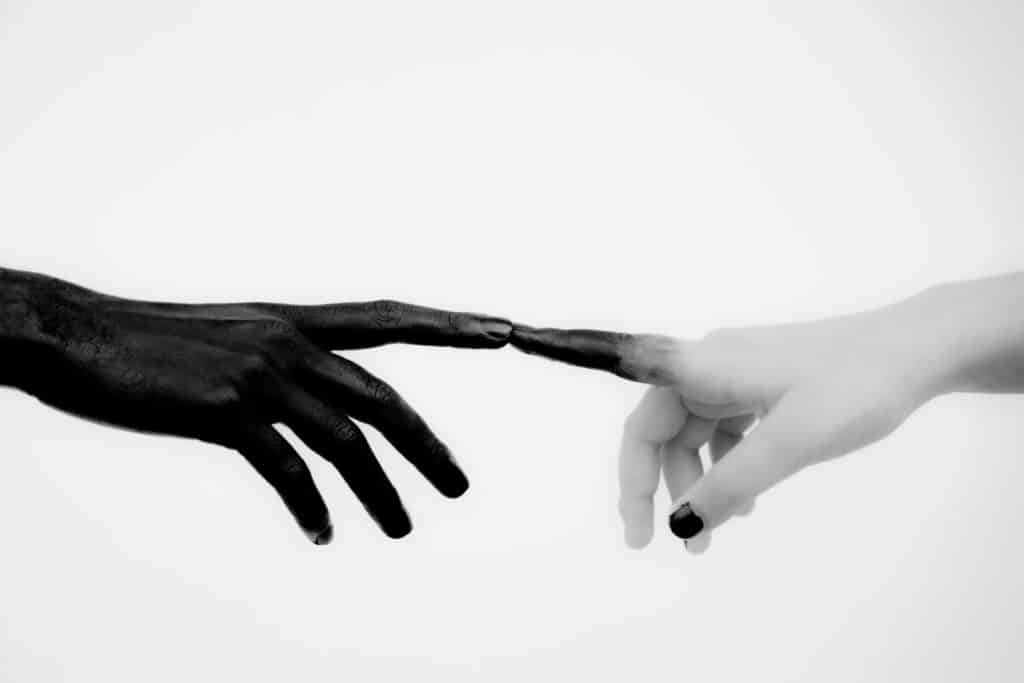
Below are some aspects you can analyse to get a sense of where on the scale of black, white and grey a villain or anti-villain might sit. The more aspects they have in the negative side, the darker they will seem. If it’s about fifty fifty, they will appear much more ambiguous. And if most or even all of the aspects are positive, you have a very strong anti-villain who is a breath away from being a hero.
(See below for how to tell whether you’ve actually got an anti-hero rather than an anti-villain)
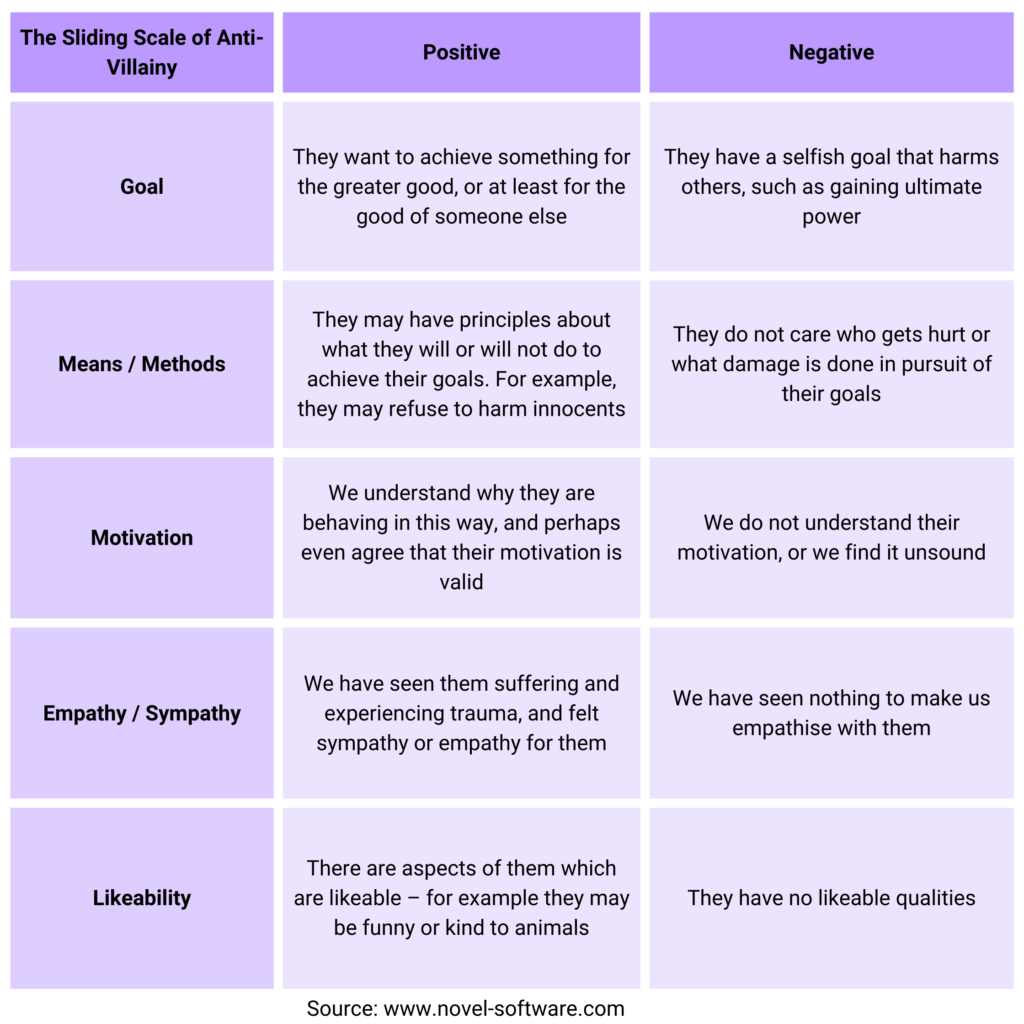
The more of these aspects which are positive, the more ‘anti’, or ‘lighter’ the villain is. The more of them which are negative, the purer, or ‘darker’ the villain is.
Types of Anti-Villain

As indicated by the sliding scale of evil, there are many ways an anti-villain can present.
Below are a few archetypes that are found quite commonly in literature and movies.
1. The well-meaning extremist
This is someone whose motto is: the ends justify the means. They often want to save the world, or humanity, but believe half or even most of humanity has to be wiped out in order to do so.
2. The Principled Villain
This is quite often a dangerous hard man who has a strict moral code. So they’re quite happy to bludgeon a criminal to death, but would never harm innocents – such as children, or animals, and will not allow others to do so either.
3. The Product of Trauma
This is a person who life has twisted into a villain. They might have been perfectly nice early on, but so many unfair and terrible things happened to them that they broke inside, and became filled with hate and a lust for revenge.
4. Villain by circumstance
This character is only a villain by virtue of being pitted against the hero in this particular story. If the perspective were shifted just slightly, then this villain could easily be the hero in their own story.
Anti Villain Examples
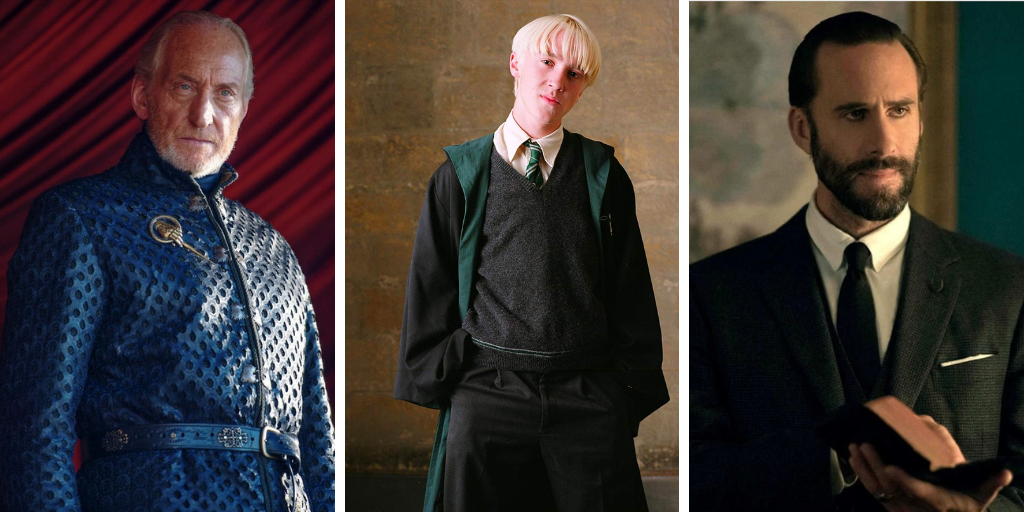
Tywin Lannister – Game of Thrones
Like many of the characters in this series, Tywin Lannister is sinister and cruel. His actions constantly antagonise and thwart those of the characters who could be more considered protagonists. However, almost everything he does, he does out of love for his family and a desire to protect them and their legacy.
Draco Malfoy – Harry Potter
Draco is cruel, mean and nasty. He actively tries to make Harry’s life difficult, and stop him achieving his goals of fitting in at school and staying out of trouble. But as the stories progress, we learn more about Draco’s past and family life – largely that he is heavily influenced by his overbearing father. We also learn that some of his behaviour is driven by envy and a sense of inadequacy, feelings many of us can identify with. Towards the end of the series, Draco is left increasingly isolated and out of his depth, and so becomes more sympathetic, and is called upon by Voldemort himself to do terrible things – a demand which is hard to disobey.
Commander Fred Waterford – The Handmaid’s Tale
The Commander is a very clear antagonist and villain, as he has ultimate power over Offred and causes her suffering both physically and mentally. He is very close to being a traditional villain. However, his motivation is the survival of the human race, in face of a drop off in birth rates, and also comes from his genuine faith in God, and his belief that he is honouring that God.
How to Use an Anti Villain in Your Story
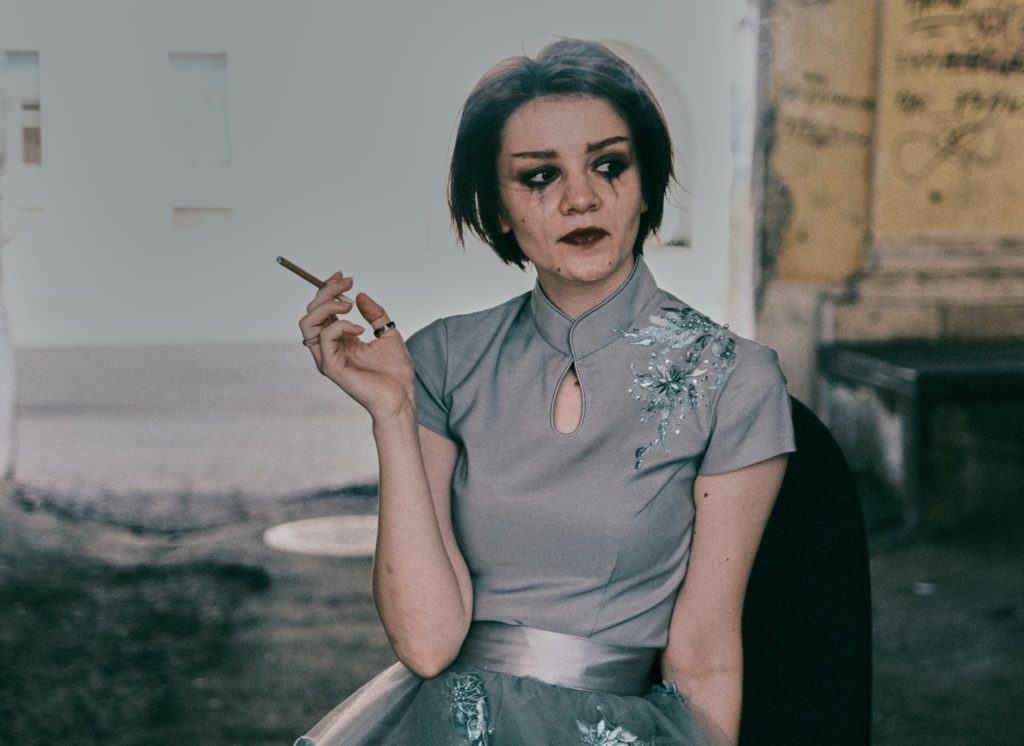
Here are a few tips for writing your own effective anti-villain.
1. Make them a mirror to your hero
The best villains are ones which reflect and amplify your hero’s traits in interesting ways, and an anti-villain should be no different. Some of the most powerful stories use the hero and villain as two sides of the same yin and yang – in other words, one cannot exist without the other.
The anti-villain could show how easily your hero could take a single wrong step and find themselves on the wrong side of right. And they can also have positive traits that your hero lacks, which can feel deliciously uncomfortable to your readers.
2. Give them a heartbreaking backstory
Imagine you are walking in the forest, and you come across a puppy by a tree. You reach down to pet it and it snaps, drawing blood, and nearly taking your finger off. You swear at the puppy, angry at how nasty it is.
Then you look closer, and realise the puppy has its foot caught in a trap. It is in agonising pain, and terrified. Suddenly your anger at the puppy evaporates, and you forgive its aggression.
Showing how your villain has been harmed, and still hurts from their trauma, works in the same way.
For example, in Maleficent, where the powerful witch becomes the protagonist instead of always being Sleeping Beauty’s two-dimensional villain, we learn that she was betrayed and mutilated by someone she loved and trusted. Suddenly, we’re rooting for her, and her actions seem justifiable. In a way, this retrospectively makes the Maleficent of the original stories into an anti-villain, rather than a traditional villain.
3. Make them powerful
If a villain is going to pose a threat to your hero, they need to have the power to cause real harm, and anti-villains are no different.
Making them empathetic and potentially embodying morals does not mean you should take away their teeth.
4. Make their motivations so compelling it makes the reader question their own beliefs
If you can make an anti-villain so understandable that you have your readers questioning their own beliefs and even half rooting for the villain to win, even though it means terrible destruction and suffering, then you have mastered the anti-villain.
Anti-hero or anti-villain?

The thing about anti-heros and anti-villains is that things can sometimes become so grey and fuzzy in the middle, they actually start to overlap.
And there are even stories where this happens, and one character actually changes from being a hero to a villain or vice versa. Examples of this are Walter from Breaking Bad, and Dark Willow in season six of Buffy.
But assuming they don’t switch over, whether a character is the hero or villain is not defined by how good or bad their actions or intentions are.
For the purposes of literature, fundamentally it is defined by their role in the story: are they the protagonist, or the antagonist?
The protagonist is the central character of the story, the one who we follow most closely. They are present in the majority of scenes, and importantly, it’s their journey of change we experience. In the vast majority of stories, the protagonist will overcome their flaws and make good in the end.
Whereas, the antagonist is the character who is at odds with the protagonist, conflicting with them at every turn, either because they are both battling for control over the same thing, or because they wish for different outcomes – one to save the world, one to destroy it, for example. In general, villains cannot overcome their flaws, and therefore end the story by losing what they want and what they need.
So if you have a character who is very morally grey or downright nasty, and you’re not sure if you’ve got an anti-hero or an anti-villain, then the litmus test is to work out whether they are the protagonist or the antagonist.
Summary
So, hopefully now you have a good idea about what an anti-villain is, and how to write one to make your story more powerful. Readers these days usually find traditionally ‘evil’ characters two dimensional and yawn-inducing, so see which of the techniques above you can use to create a compelling anti-villain that readers both fear and admire – and most importantly, they will remember for years to come.
Further reading:
https://tvtropes.org/pmwiki/pmwiki.php/Analysis/AntiVillain?from=Main.SlidingScaleOfAntiVillains
https://www.2bridges.nyc/nycblog/whats-the-difference-antihero-vs-antivillain/
Unlock your writing potential
If you liked this article by the Novel Factory, then why not try the Novel Factory app for writers?
It includes:
- Plot Templates
- Character Questionnaires
- Writing Guides
- Drag & Drop Plotting Tools
- World Building resources
- Much, much more
